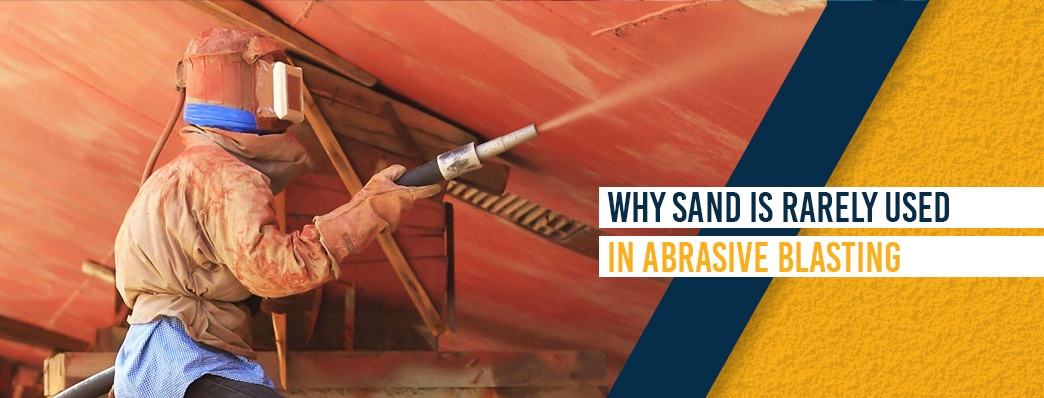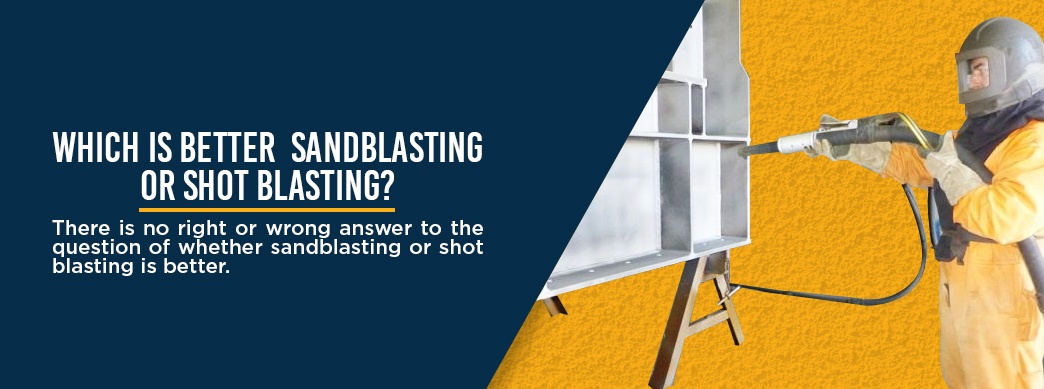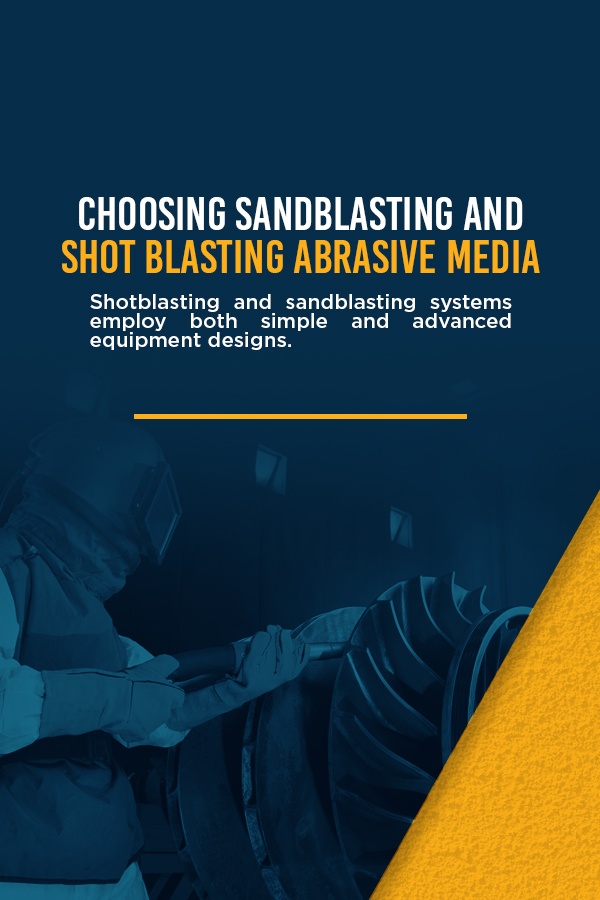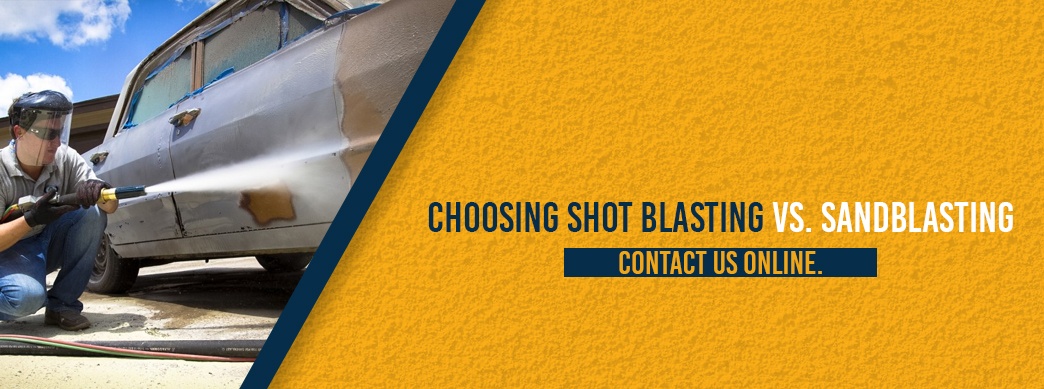Shot Blasting & Sandblasting: What’s the Difference?
Many people often get confused about the distinction between sandblasting and shot blasting. Although the terms sound alike, they represent distinct processes within the broader field of abrasive blasting. At first glance, the difference between sandblasting and shot blasting may seem subtle, but understanding their unique approaches can help determine which method is best suited for your needs. In essence, the primary difference lies in how each method applies abrasive materials to surfaces being prepared for finishing. Sandblasting relies on compressed air to spray abrasive materials like sand directly onto the object. On the other hand, shot blasting utilizes centrifugal force generated by a mechanical device to hurl the abrasive material against the target surface. While sandblasting remains popular due to its versatility, shot blasting excels in scenarios requiring higher impact and efficiency. Interestingly, the term "sandblasting" is somewhat outdated today. Modern industries rarely use sand as an abrasive medium due to its limitations and potential health risks. Instead, safer alternatives made from minerals, metals, glass, plastics, or even organic substances like corn cobs and walnut shells have become standard practice. For those interested in learning more or seeking professional assistance, feel free to reach out to us at 800-582-3693 or visit our website. Historically, sand was the go-to material for sandblasting due to its abundance and ease of access. However, sand presents several challenges that have led to its decline in favor of newer materials. One major issue is its tendency to retain moisture, making it difficult to distribute evenly through compressed air systems. Additionally, natural sand often contains impurities that can interfere with the blasting process. Perhaps most concerning is the health risk associated with using sand as an abrasive medium. Sand contains crystalline silica, which poses significant respiratory dangers when inhaled. Prolonged exposure to silica dust can lead to severe conditions such as silicosis, a debilitating lung disease, and even lung cancer. In response to these concerns, regulatory bodies like OSHA have implemented stringent guidelines to minimize occupational exposure to silica dust. Today, the abrasive blasting industry offers a wide array of safer and more effective alternatives to traditional sandblasting. These options cater to diverse applications, providing superior performance without compromising worker safety. As a result, sandblasting remains relevant mainly for its affordability and simplicity, whereas shot blasting dominates complex industrial projects demanding greater precision and strength. Sandblasting involves propelling abrasive media using compressed air to clean, etch, or prepare surfaces for subsequent finishing steps. Over the past century, this technique has undergone significant advancements, evolving from rudimentary setups that generated hazardous dust clouds to sophisticated enclosed systems offering precise control over the blasting process. Despite these improvements, sandblasting continues to dominate the market thanks to its cost-effectiveness, adaptability, and ability to handle delicate materials gently. Modern sandblasting equipment supports multiple media choices tailored to specific requirements. Whether it’s removing stubborn rust from automotive parts or restoring antique furniture, sandblasting provides flexible solutions that suit virtually any scenario. Furthermore, innovations in media composition ensure compatibility with increasingly diverse materials, expanding the scope of possible applications. Unlike sandblasting, shot blasting employs centrifugal force to accelerate abrasive particles toward the workpiece. This approach differs fundamentally from conventional sandblasting in terms of mechanics and intended outcomes. Shot blasting typically operates at higher pressures and delivers more concentrated impacts, making it ideal for heavy-duty tasks involving robust materials. Shot blasting finds extensive usage across various industries, including automotive manufacturing, construction, and maritime sectors. Its robust capabilities make it indispensable when dealing with challenging tasks such as de-scaling massive steel structures or preparing surfaces for high-performance coatings. Given its aggressive nature, shot blasting demands careful containment measures to protect surrounding areas from collateral damage. Deciding between sandblasting and shot blasting ultimately depends on the specific demands of your project. Both methods excel in particular contexts but differ significantly in terms of aggressiveness, speed, and expense. Sandblasting tends to be gentler and more forgiving, making it preferable for sensitive materials prone to damage under intense forces. Conversely, shot blasting shines in situations requiring deep penetration and thorough surface preparation. While sandblasting proves economical and straightforward, shot blasting requires specialized expertise and investment in advanced machinery. Consequently, shot blasting usually costs more than sandblasting but delivers unmatched results for demanding applications. Professionals weighing these factors should consult experienced technicians who can recommend optimal strategies based on individual circumstances. In summary, sandblasting serves as a practical entry point for basic cleaning and finishing operations, while shot blasting caters to more rigorous demands where precision and durability matter most. Understanding these distinctions empowers users to select appropriate tools that align with their goals and constraints. Sandblasting relies heavily on high-pressure compressed air to propel abrasive media effectively. This versatile technology accommodates numerous surface types and treatment objectives, ranging from rust removal to paint stripping. Sandblasting equipment facilitates efficient surface preparation prior to applying protective coatings or decorative finishes. Key components of sandblasting systems include: Shotblasting operates differently by harnessing centrifugal force via wheel blast equipment. This setup accelerates abrasive media—such as steel shot or grit—onto the targeted surface via spinning wheels. Unlike sandblasting, shotblasting doesn't rely on compressed air; instead, it leverages mechanical propulsion for enhanced efficiency. Common shotblasting equipment includes: Effective abrasive blasting hinges on selecting the right media for the job. Whether working with sandblasting or shotblasting systems, media selection plays a pivotal role in achieving desired outcomes. Abrasive particles come in various forms, each designed for specific purposes. Air blast systems inject media into compressed air streams via pots or containers, while centrifugal shot blasting systems utilize mechanical feeds to deliver abrasives onto spinning wheels. Key considerations when choosing abrasive media include shape, size, hardness, and density. Particle shape influences the final surface finish—rounded particles tend to be less abrasive compared to angular ones. Particle size, measured in mesh, determines filtration capacity based on hole density per square inch. Hardness affects penetration depth, ensuring compatibility between media and treated surfaces. Lastly, density impacts mass relative to volume, influencing energy transfer during impact. Each abrasive media type brings unique attributes beyond fundamental properties like shape, size, hardness, and density. Selection largely depends on the target surface rather than the type of equipment used. Below are commonly utilized abrasive materials in sandblasting and shot blasting operations: This overview highlights essential aspects of sandblasting and shot blasting processes. Equipment differences define their respective strengths, yet both share common goals of enhancing surface quality before applying finishes. Selecting the optimal system and media demands professional guidance tailored to specific projects. Finishing Systems stands ready to assist with professional sandblasting and shot blasting services. Located centrally in York, PA, we've served clients since the early 1970s, cultivating extensive knowledge and expertise to tackle any finishing challenge. For further inquiries or assistance, please call 800-582-3693 or visit us online. For additional information regarding sandblasting and shot blasting services, or advice on suitable abrasion media, contact us today! Solid Solution Powders Of Tungsten-titanium-tantalum Carbide Solid Solution Powders Of Tungsten-Titanium-Tantalum Carbide,Tungsten Titanium Tantalum Carbide,Tungsten Titanium Tantalum Carbide Powder,Tungsten Titanium Tantalum Carbide Used For Insert zhuzhou haokun hard materials CO.,LTD , https://www.hkmetalpowder.com
Shot Blasting & Sandblasting: What’s the Difference?
Last Updated: February 27, 2024
Why Sand Is Rarely Used in Abrasive Blasting?

What Is Sandblasting?
What Is Shot Blasting?
Which Is Better – Sandblasting or Shot Blasting?

Equipment Used in Sandblasting
Equipment Used in Shot Blasting
Choosing Sandblasting and Shot Blasting Abrasive Media

Sandblasting and Shot Blasting Abrasive Media Materials
Choosing Shot Blasting vs. Sandblasting

